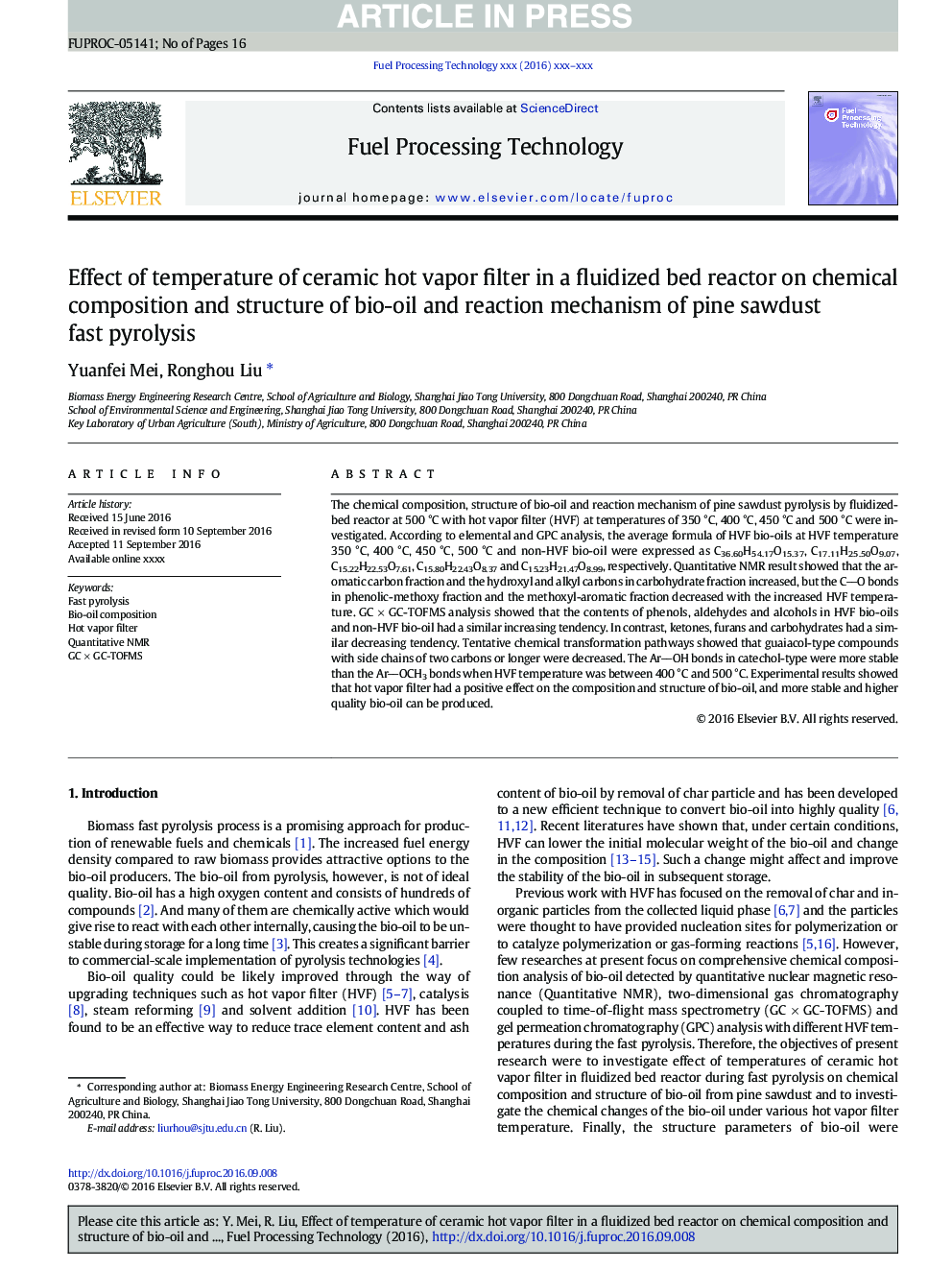| Article ID | Journal | Published Year | Pages | File Type |
|---|---|---|---|---|
| 6476512 | Fuel Processing Technology | 2017 | 16 Pages |
Abstract
The chemical composition, structure of bio-oil and reaction mechanism of pine sawdust pyrolysis by fluidized-bed reactor at 500 °C with hot vapor filter (HVF) at temperatures of 350 °C, 400 °C, 450 °C and 500 °C were investigated. According to elemental and GPC analysis, the average formula of HVF bio-oils at HVF temperature 350 °C, 400 °C, 450 °C, 500 °C and non-HVF bio-oil were expressed as C36.60H54.17O15.37, C17.11H25.50O9.07, C15.22H22.53O7.61, C15.80H22.43O8.37 and C15.23H21.47O8.99, respectively. Quantitative NMR result showed that the aromatic carbon fraction and the hydroxyl and alkyl carbons in carbohydrate fraction increased, but the CO bonds in phenolic-methoxy fraction and the methoxyl-aromatic fraction decreased with the increased HVF temperature. GC Ã GC-TOFMS analysis showed that the contents of phenols, aldehydes and alcohols in HVF bio-oils and non-HVF bio-oil had a similar increasing tendency. In contrast, ketones, furans and carbohydrates had a similar decreasing tendency. Tentative chemical transformation pathways showed that guaiacol-type compounds with side chains of two carbons or longer were decreased. The ArOH bonds in catechol-type were more stable than the ArOCH3 bonds when HVF temperature was between 400 °C and 500 °C. Experimental results showed that hot vapor filter had a positive effect on the composition and structure of bio-oil, and more stable and higher quality bio-oil can be produced.
Related Topics
Physical Sciences and Engineering
Chemical Engineering
Chemical Engineering (General)
Authors
Yuanfei Mei, Ronghou Liu,
